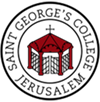Footsteps of Jesus
Footsteps of Jesus is a 10-day study pilgrimage focusing on the Scriptures, sites, and landscapes associated with Jesus’ life, death, and resurrection.
Emphasizing the lived experience of pilgrimage as Christian formation, the course encounters the land of Jesus’ ministry, engaging the biblical narratives in their physical, historical, and archaeological contexts. The course roughly follows a chronological arc of Jesus’ life. Some attention is given to the Old Testament landscapes and narratives as well as to the commemorations of Acts. Footsteps of Jesus has an appreciation for pilgrim traditions over the centuries, while engaging the contemporary Living Stones of Israel and Palestine.
The course includes a 3-day, 2-night excursion to the Galilee and typically has at least one afternoon in Jerusalem. Alongside teachings and reflections in the field, occasional mini-lectures prepare course participants for site visits.
While the 10-day Footsteps of Jesus has the same aims and objectives as the 14-day Palestine of Jesus course, the latter course has four more days of the sites and landscapes of Jesus and the contemporary context of Israel and Palestine.
The aims of Footsteps of Jesus
- To study the life and ministry of Jesus of Nazareth, including the historical contexts and cultures of the land of Jesus’ ministry;
- To explore the Holy Land as Christian pilgrims by integrating biblical and contextual studies with spiritual reflection;
- To encounter the roots and traditions of the Christian faith as they were formed in the Holy Land;
- To engage local Christian communities, Jewish and Muslim perspectives, and contemporary issues in Israel and Palestine, including its problems, struggles, hopes, and promises, and to share these experiences with people back home;
- To return home renewed in faith.
Content of the Course
While iterations of the course vary depending upon local circumstances, local holidays, and the season and days of the week as well as some intentional variations of the program, Footsteps of Jesus draws upon the following places, narratives, and landscapes:
- The Holy Sepulchre, the site of Jesus’ death (the rock of Calvary) and resurrection (the tomb of Christ);
- Nazareth, Jesus’ childhood home and the site of the annunciation;
- Bethlehem, the place of Jesus’ birth;
- The Jordan River, the site of Jesus’ baptism, including an opportunity to reaffirm one’s baptismal vows;
- The Judean Wilderness, where Jesus was tempted after his baptism;
- A day in Nablus (ancient Shechem), where Jesus encountered the Samaritan women at Jacob’s Well;
- TheSea of Galilee, visiting multiple sites commemorating Jesus’ Galilean ministry, such as Capernaum, Bethsaida, the Mount of Beatitudes, and the Multiplication of the Fish and Loaves as well as a boat ride on the lake;
- Caesarea Philippi (Banias), where Jesus asked his disciples: “Who do you say that I am?”;
- The Mount of Olives, including the commemorations of Jesus’ entrance into Jerusalem, the teachings of Jesus, and the place of Jesus’ ascension.
- The Garden of Gethsemane, the place of Jesus’ prayer, betrayal, and arrest;
- Mount Sion (the Western Hill) containing the commemorations of the Last Supper, the trail of Jesus, and Pentecost.
- The remains of the Temple Mount from Jesus’ day, including excavations south and west of the retaining walls of the complex.
- The Al Aqsa Mosque and the Dome of the Rock (historical and contemporary perspectives);
- The Way of the Cross (Via Dolorosa);
- An Emmaus location, commemorating Jesus’ resurrection;
Contemporary Context (generally includes)
- Worship with a local Anglican congregation;
- The Haram esh-Sharif (Al-Aqsa Mosque);
- The Western Wall;
- Yad Vashem Holocaust Remembrance Center;
- A Palestinian refugee camp;
- Speakers representing local initiatives for peace and reconciliation.
Resources and Readings
While no readings are required for the course, a recommended text for framing the experience is Jerusalem Bound: How to be a Pilgrim in the Holy Land (Cascade, 2020). For questions about the course, feel free to contact course director, Rodney Aist (coursedirector@sgcjerusalem.org).

